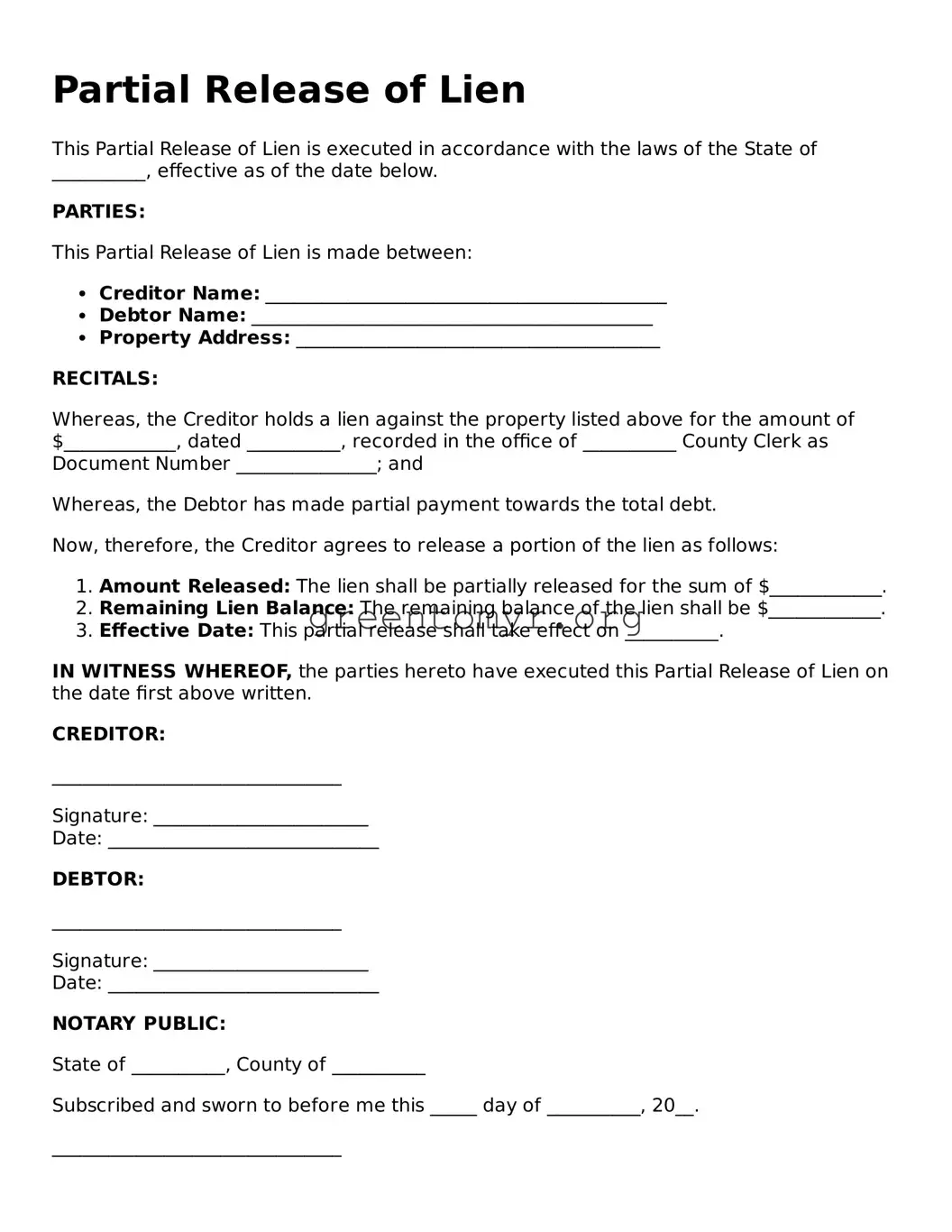Partial Release of Lien
This Partial Release of Lien is executed in accordance with the laws of the State of __________, effective as of the date below.
PARTIES:
This Partial Release of Lien is made between:
- Creditor Name: ___________________________________________
- Debtor Name: ___________________________________________
- Property Address: _______________________________________
RECITALS:
Whereas, the Creditor holds a lien against the property listed above for the amount of $____________, dated __________, recorded in the office of __________ County Clerk as Document Number _______________; and
Whereas, the Debtor has made partial payment towards the total debt.
Now, therefore, the Creditor agrees to release a portion of the lien as follows:
- Amount Released: The lien shall be partially released for the sum of $____________.
- Remaining Lien Balance: The remaining balance of the lien shall be $____________.
- Effective Date: This partial release shall take effect on __________.
IN WITNESS WHEREOF, the parties hereto have executed this Partial Release of Lien on the date first above written.
CREDITOR:
_______________________________
Signature: _______________________
Date: _____________________________
DEBTOR:
_______________________________
Signature: _______________________
Date: _____________________________
NOTARY PUBLIC:
State of __________, County of __________
Subscribed and sworn to before me this _____ day of __________, 20__.
_______________________________
Notary Public Signature
My commission expires: _______________
